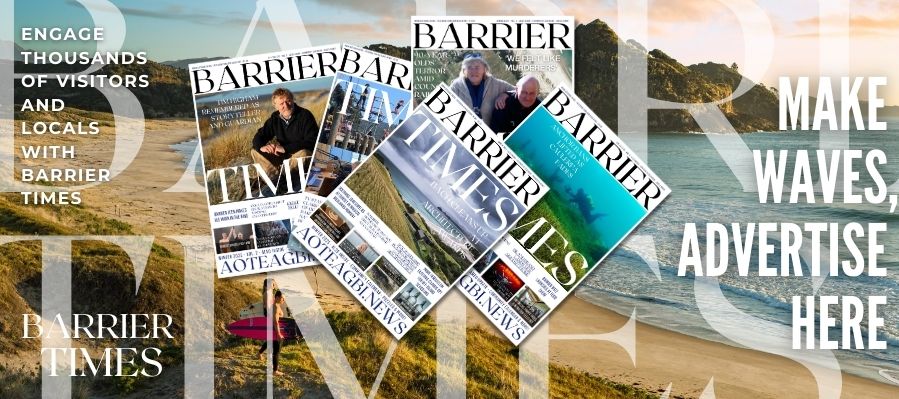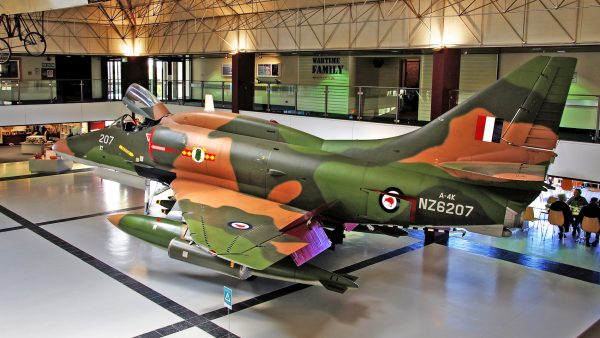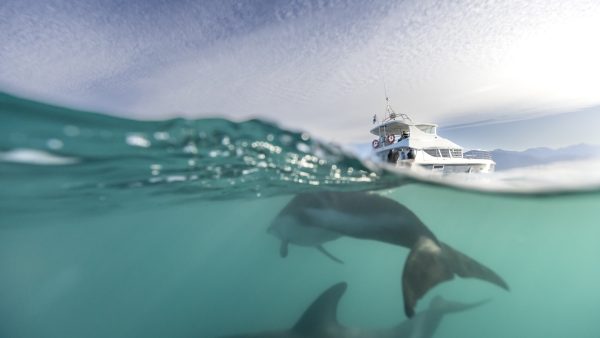In an event that has no doubt sparked curiosity and intrigue among locals, a distinctive naval vessel has been observed hovering approximately 5 nautical miles off Whangaparapara Harbour. The sighting, part of a broader two-week sea trial that began in Auckland on February 13, presents a novel sight against the familiar backdrop of fishing boats, cargo ships, and leisure vessels that usually dot the region’s waters.
Dubbed the Bluebottle, and known formally as Bellona for this trial, the uncrewed surface vessel (USV) or “drone boat” is a part of the Royal New Zealand Navy’s push into autonomous maritime technologies.
Designed and manufactured by Sydney-based Ocius Technology, the Bluebottle stands out not just for its operational capabilities but also for its unique design. When its sail (doubling as a solar panel) is deployed, its low profile in the water and lack of a conventional cockpit makes it look like something from science fiction. When it drops the sail – opting for one of its other three power sources. You’d almost miss it.
The vessel embarked on its sea trials with daytime operations in Auckland Harbour, under the escort of Navy personnel in a RHIB (rigid inflatable boat), before moving on to overnight sailings in the Hauraki Gulf. Those operations are closely monitored from a purpose-built control room at the Devonport Naval Base, ensuring the Bluebottle’s safe navigation and effective control.
Powering the 6.8m Bluebottle are renewable energy sources — the sun, wind, or waves — enabling it to undertake a variety of missions, including fishery protection, border security, and the collection of meteorological data. Its comprehensive sensor suite and navigational lights facilitate the safe and efficient management of the vessel and the identification of other water users, showcasing the potential for autonomous systems in maritime surveillance and operations.
Commodore Garin Golding, the Navy’s maritime component commander, highlighted the vast scope of New Zealand’s Exclusive Economic Zone (EEZ), the fifth largest globally. The introduction of the Bluebottle into the Navy’s fleet represents a strategic advancement in patrolling and managing this expansive area. “Coupled with the 30m-square-kilometre search and rescue area that New Zealand has responsibility for, that is a lot of ocean to cover,” Golding noted.
“The evidence we’ve seen from our partner militaries overseas is that uncrewed drone aircraft and vessels can provide real value in fulfilling some of these search and surveillance tasks,” Golding said.
The Bluebottle stands out for its pioneering integration of renewable energy technologies. It combines photo-voltaic cells to power a compact motor and propeller, the retractable sail to capture the wind’s energy, and an innovative flipper and rudder system that leverages wave motion for propulsion in less windy and cloudy conditions.
Despite its relatively modest top speed of 5 knots (9.2km/h), the true strength of the vessel lies in its durability and ability to navigate through waves up to 9 meters high.
The vessel is outfitted with comprehensive surveillance equipment, including radar, and electro-optic and infrared cameras, all monitored from a central control room at the Devonport Naval Base.
Commander Andy Bryant, the Navy’s autonomous systems staff officer, commended the Bluebottle’s capacity to support the Australian Government’s operations extensively without needing maintenance. He highlighted, “The Bluebottle has already undertaken a range of activities in support of the Australian Government for long periods of time without the need for refuelling, recharging or crew respite.”
“I’m confident we will see similar benefits from the time we have with the vessel, particularly a better understanding of how to operate and sustain uncrewed vessels, and this will provide a great opportunity to share experiences on the new system with the Royal Australian Navy.” he added.
The Bluebottle was last spotted heading toward the south coast of the motu, and will become a familiar sight for boaties and marine traffic around the Hauraki Gulf and Waitematā Harbour during a broader seven-month evaluation.







